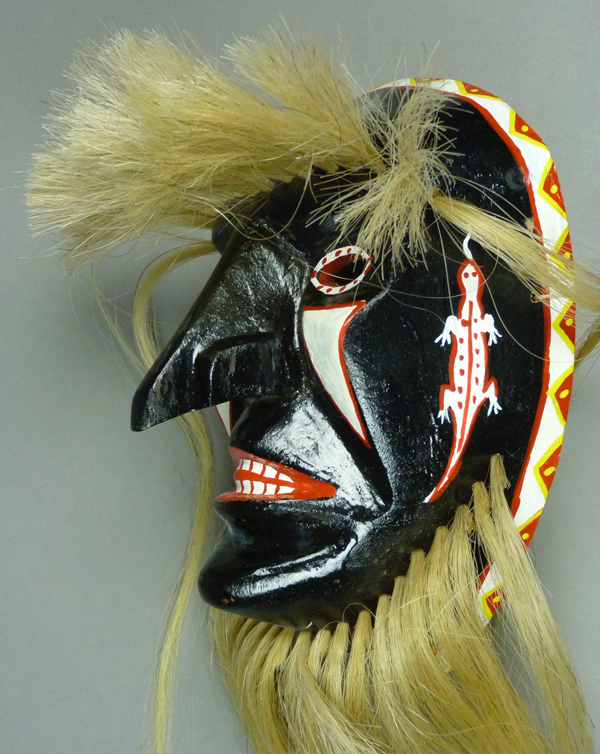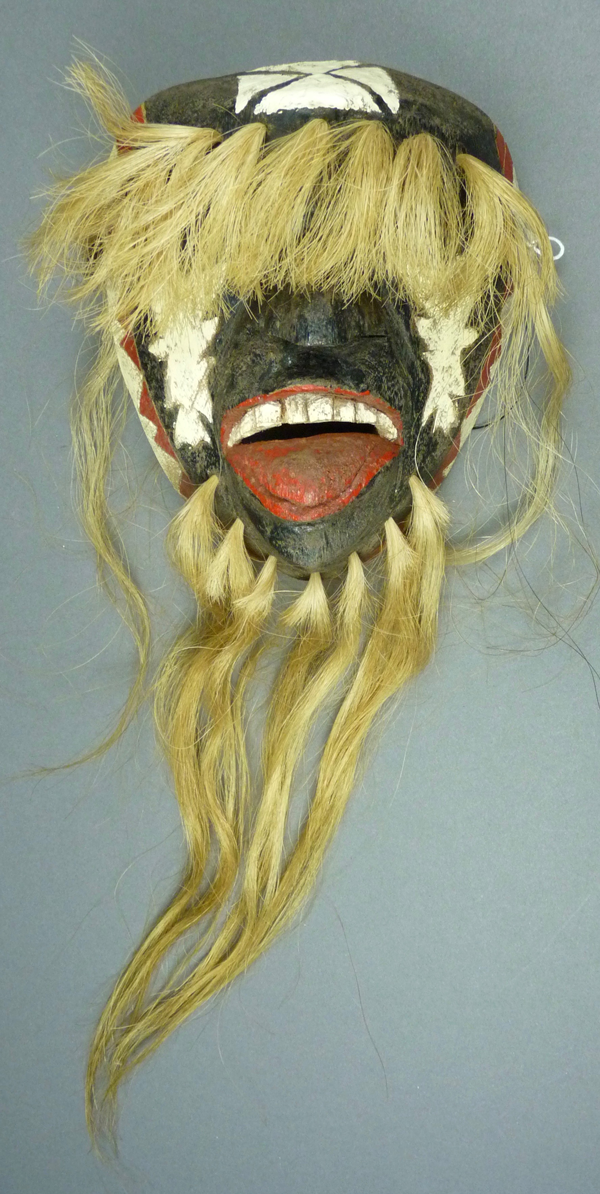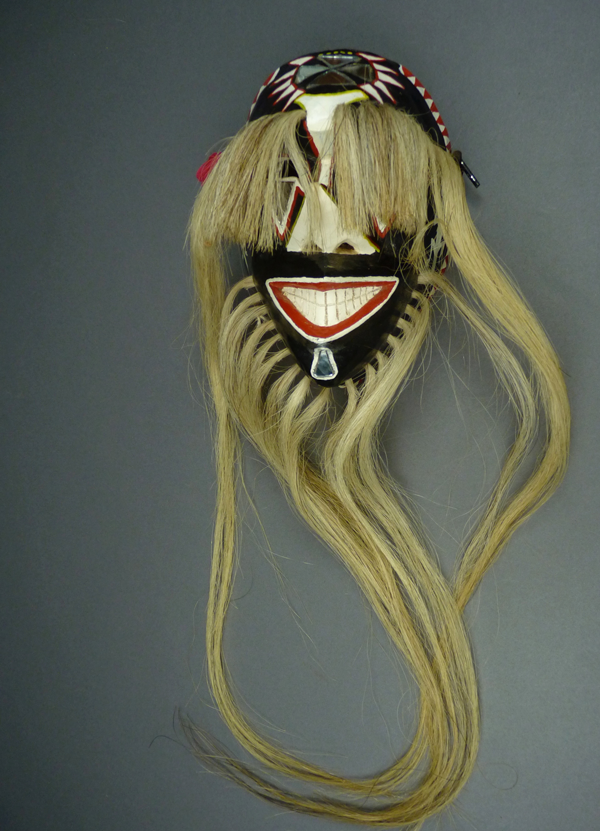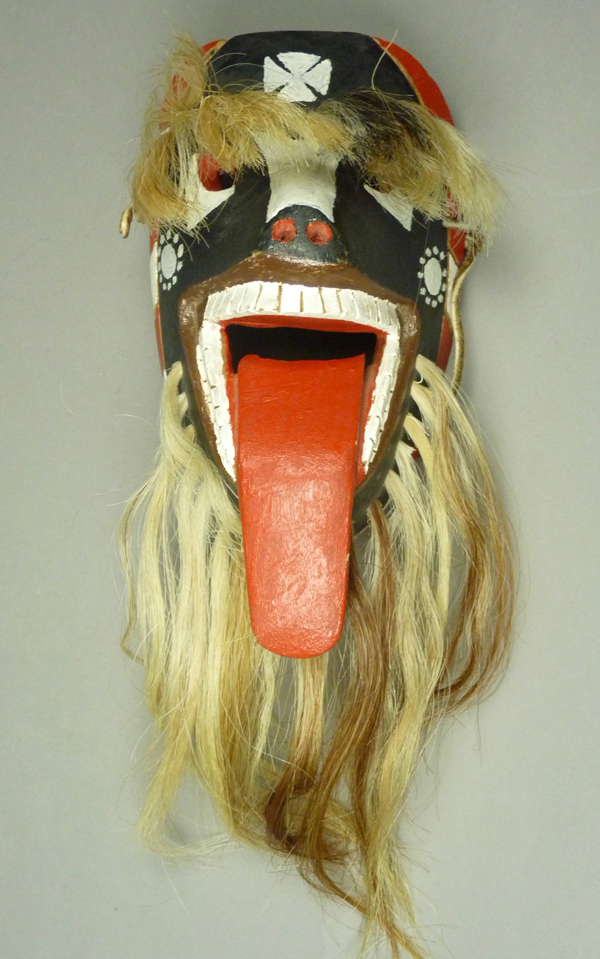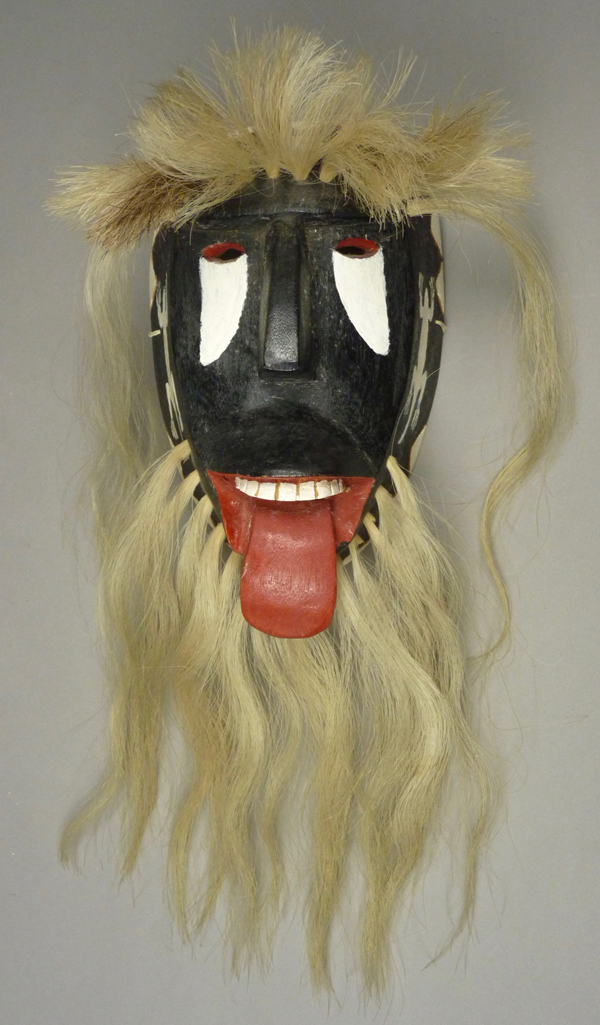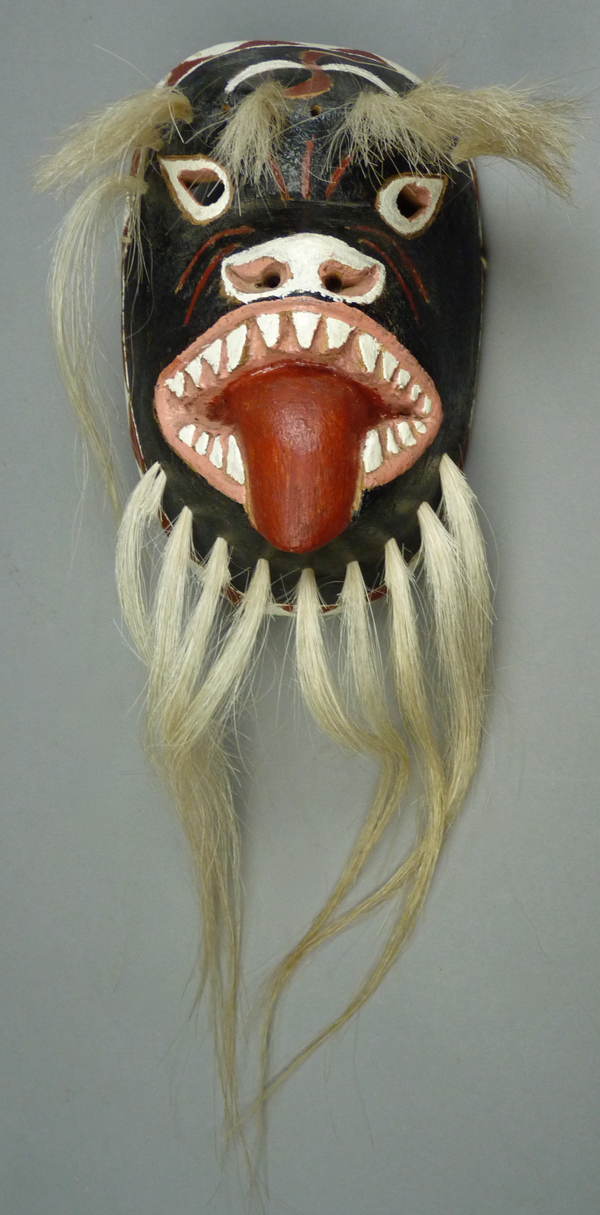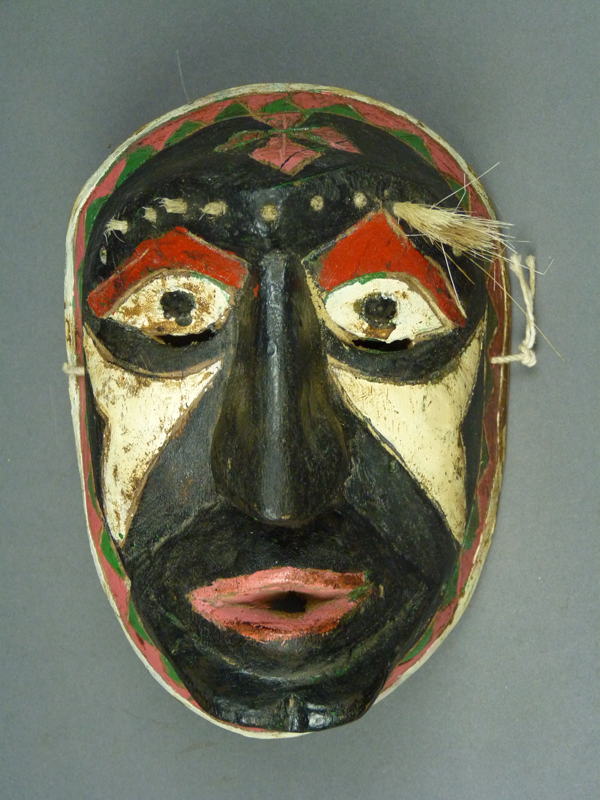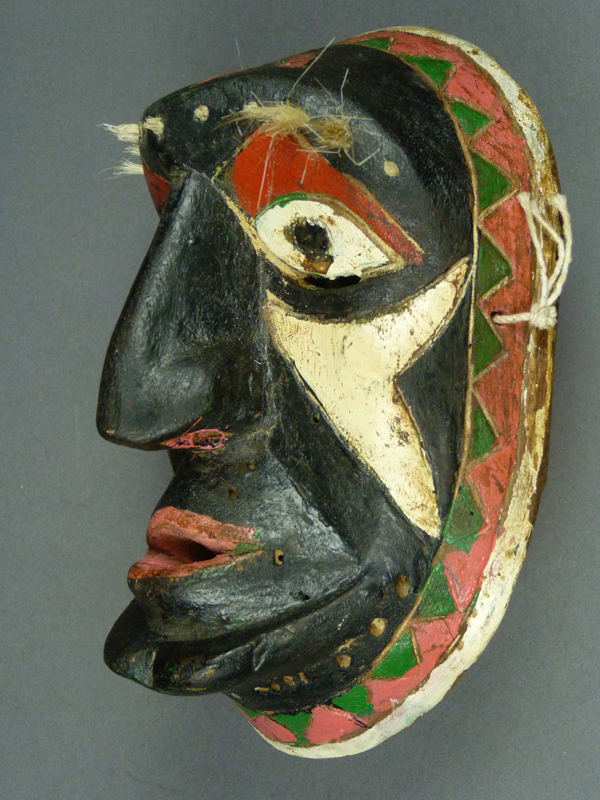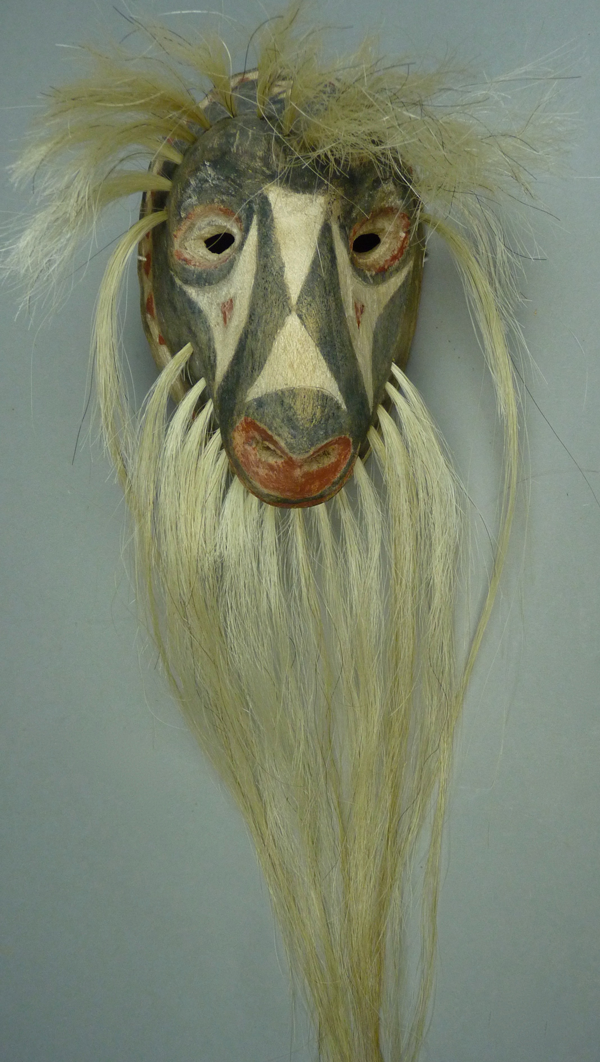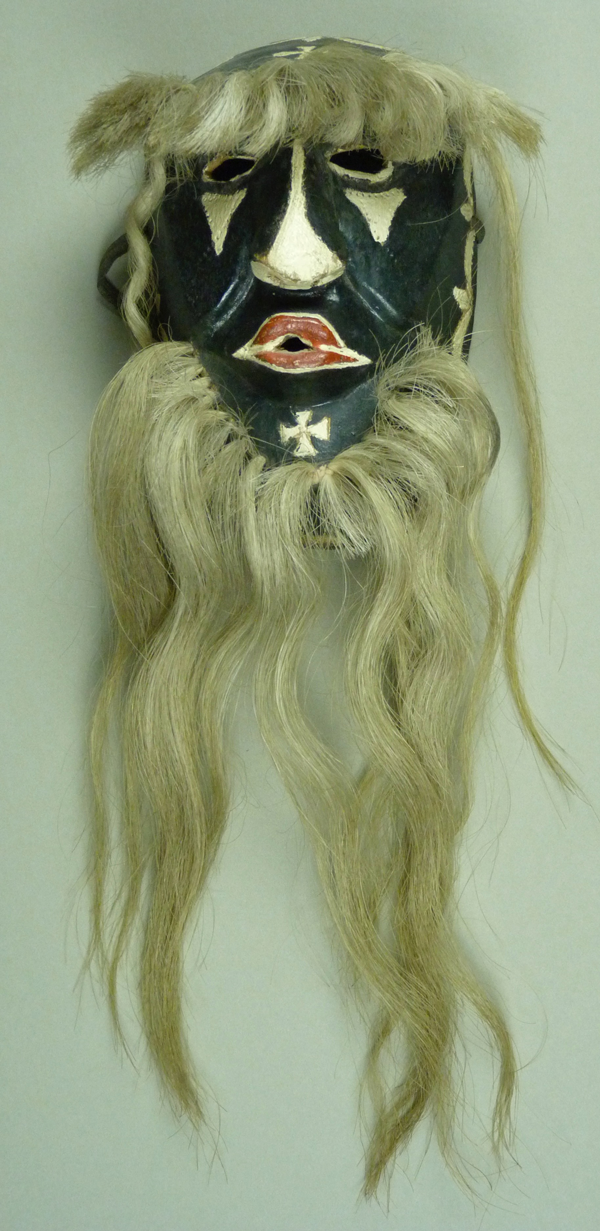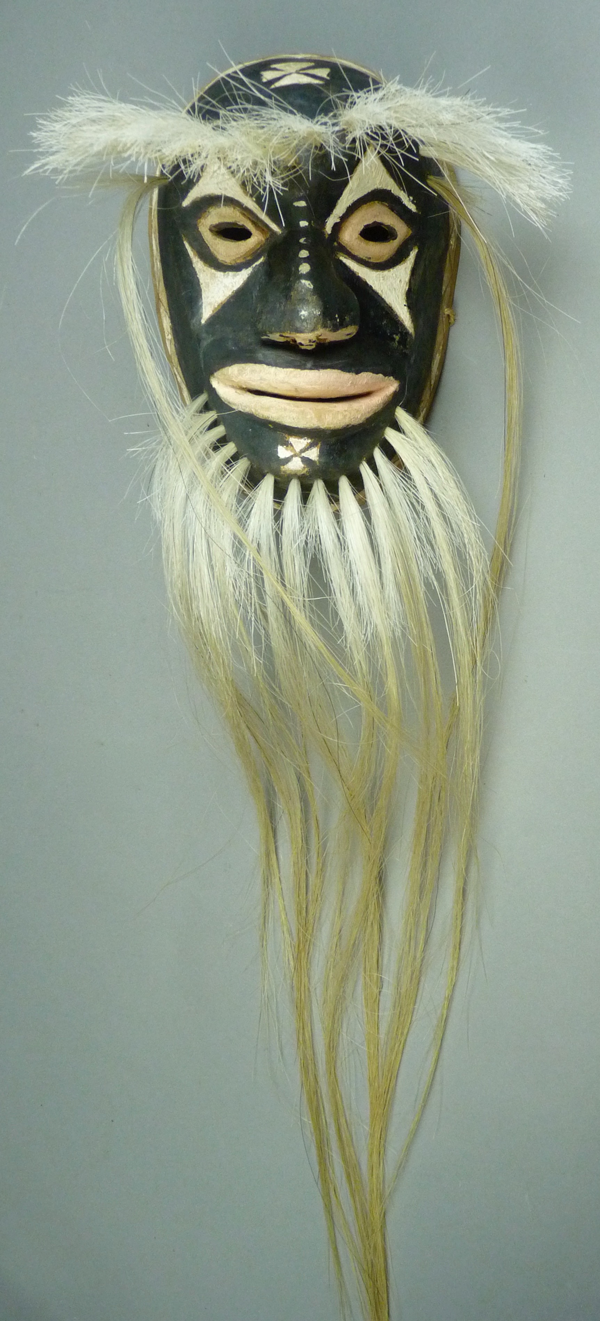Ruben Hernández is a Yaqui carver who lives and works in Vicam, Sonora. I have been familiar with this carver’s work for many years. For some reason that is unknown to me, one finds masks in Ruben’s style under at least three different names—Ruben Hernández, Martin Ramírez Urbanezo, and Antonio Rosas. I suppose it is possible that these are three separate carvers who share one overlapping style, but I tend to think that Ruben carved under all three names.
I have masks of Ruben in my collection that were collected in Sonora by dealers other than Barney and Mahina Drees Burns. When I photographed the Burns mask collection, I found at least four additional masks by Ruben, some attributed to him and some to other carvers. I also encountered a number of masks by other carvers that had been erroneously attributed to Ruben Hernández by those who sold them to Barney and Mahina. This has been, of course, a generic problem with Pascola masks collected in Sonora, reflecting genuine similarities in style between carvers, along with a tendency for one artist to repaint another carver’s work. Generic local styles add to the confusion.
Today I will focus on human faced masks from these collections that are typical of Ruben’s hand. Next week I will discuss Ruben’s animal faced masks.
Here is a mask from my collection that I purchased on EBay™ in 2005. I recall that a dealer offered a series of masks by this carver, and I only purchased the best of them. I tell you this to emphasize that Ruben has carved many masks and the quality of those masks has varied from mediocre to wonderful. This one was labeled as the work of Martin Ramírez Urbanezo and appears to be undanced.
I was immediately impressed with the dramatic nature of this carving. Looking at the details in comparison to those on masks by Hilario Álvarez Mendoza, I am struck by the similarities in their styles, although Ruben carves with greater flair.

